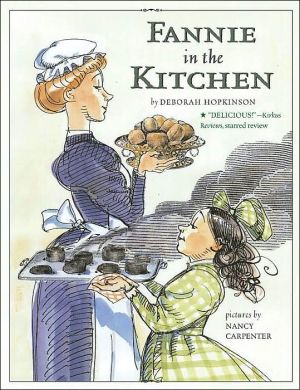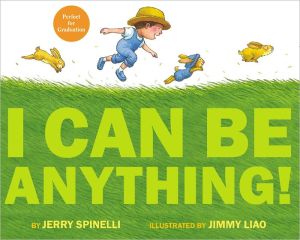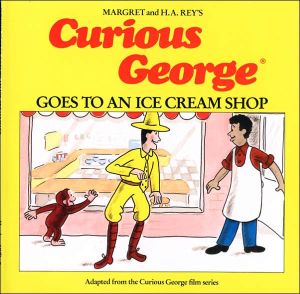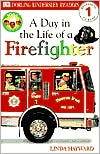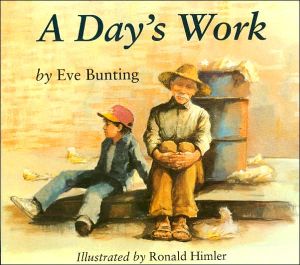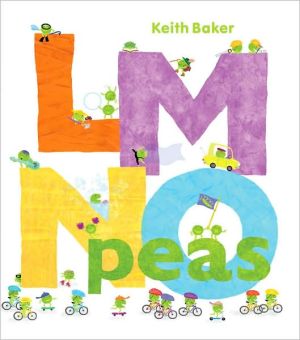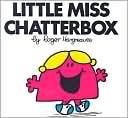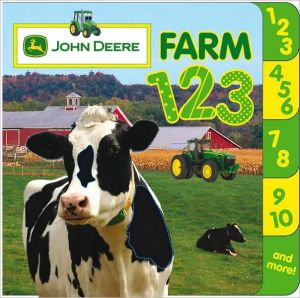Fannie in the Kitchen: The Whole Story from Soup to Nuts of How Fannie Farmer Invented Recipes with Precise Measurements
Marcia enjoys being her mother's helper, so she's hurt when Mother hires Fannie Farmer to prepare family's meals. But sure enough Fannie's charm (and griddle cakes!) win Marcia over, and she finds herself cooking up delights she never thought possible!\ \ \ Fannie Farmer is a mother's helper in the Shaw house, where the daughter gives her the idea of writing down precise instructions for measuring and cooking, which eventually became one of the first modern cookbooks.\
Search in google:
Marcia was trying to help her mama. So maybe balancing on top of a tower of chairs to dip candles wasn't such a good idea. And perhaps her biscuits worked better as doorstops than dessert. Still, does her mama really need to hire a mother's helper?Then Fannie Farmer steps into their kitchen, and all of a sudden the biscuits are dainty and the griddle cakes aren't quite so...al dente. As Fannie teaches Marcia all about cooking, from how to flip a griddle cake at precisely the right moment to how to determine the freshness of eggs, Marcia makes a wonderful new friend.Here's the story "from soup to nuts" — delightfully embellished by Deborah Hopkinson — of how Fannie Farmer invented the modern recipe and created one of the first and best-loved American cookbooks. Nancy Carpenter seamlessly incorporates vintage engravings into her pen, ink, and watercolor illustrations, deliciously evoking the feeling of a time gone by.Book MagazineThis delightful book begins with the story of how Fannie Farmer, who was once a mother's helper for the Shaw family, taught young Marcia Shaw how to cook. Farmer comes across as firm but kind as she instructs Marcia on how to make delicious griddle cakes. Her words come directly from her famous cookbook, one of the first with exact directions for measuring and cooking. Illustrations that combine pen-and-ink, watercolor and nineteenth-century engravings lend a Victorian air to the setting and characters. The story concludes with Fannie Farmer's famous griddle cake recipe for readers who are inspired to try cooking. Kathleen Odean
\ From The CriticsThis delightful book begins with the story of how Fannie Farmer, who was once a mother's helper for the Shaw family, taught young Marcia Shaw how to cook. Farmer comes across as firm but kind as she instructs Marcia on how to make delicious griddle cakes. Her words come directly from her famous cookbook, one of the first with exact directions for measuring and cooking. Illustrations that combine pen-and-ink, watercolor and nineteenth-century engravings lend a Victorian air to the setting and characters. The story concludes with Fannie Farmer's famous griddle cake recipe for readers who are inspired to try cooking. \ —Kathleen Odean \ \ \ \ \ \ \ Publishers Weekly\ - Publisher's Weekly\ Prepared to perfection and served up with style, this historical nugget imagines an interlude in the life of cookbook pioneer Fannie Farmer, who, prior to her stint at the Boston Cooking School, worked as a mother's helper. As Hopkinson (Maria's Comet) envisions it, the daughter of the houseDwho has a touch of the Eloise geneDis not at all pleased with Fannie's arrival. "I'm your helper," the spunky Marcia protests to her mother, but she soon becomes an acolyte: "Fannie seemed like a magician who could make mashed potatoes fluffier than clouds and blueberry pies sweeter than a summer sky." Marcia's many culinary flops, on the other hand, from discovering that she has cracked a rotten egg into her batter to flipping a griddle cake onto the cat, ultimately inspire the unflappable Fannie to write down precise instructions in a precursor to her immortal cookbook. Cleverly served up in seven brief "courses," the proceedings are garnished with Carpenter's irreverent illustrations, which seamlessly incorporate period engravings within pen-and-wash drawings. Her scenes wittily spoof Victorian decorum, whether showing the perfectly coiffed and coutured lady of the house greedily licking her plate or the initially sullen Marcia, slumped in a chair with her back to the reader, her scowl reflected in a pair of water glasses, a gravy boat and a decanter. The biographical afterword and an appended pancake recipe are simply icing on the (griddle) cake. Ages 4-9. (May) Copyright 2001 Cahners Business Information.\ \ \ Publishers Weekly"Prepared to perfection and served up with style, this historical nugget imagines an interlude in the life of cookbook pioneer Fannie Farmer," said PW in our Best Books citation. "Carpenter's irreverent illustrations spoof Victorian decorum." Ages 4-9. (Aug.) Copyright 2004 Reed Business Information.\ \ \ \ \ Children's LiteratureWhen Marcia Shaw's mother is about to have a baby, she hires young Fannie Farmer to help out in her home. Marcia is offended. First, although only a child, she considers herself an ideal mother's helper, who can make perfect long candles, scrub laundry, polish lamp chimneys and even bake rather blackened cookies. Second, she doesn't want a new baby. She hopes Fannie can't cook and will soon be gone. The serene, red-haired Fannie, however, can cook like a dream. Marcia is soon fascinated by Fannie's skill and wants to do as well. After disasters with flipped griddlecakes and a rotten egg in her cake, Marcia is ready to learn Fannie's secrets and becomes an apt pupil in the kitchen. As Fannie guides her through culinary intricacies, Marcia persuades her to write all the instructions down. This notebook eventually leads to the creation of the Boston Cooking School Cookbook, perhaps better known as The Fannie Farmer Cookbook. The little-known facts of the story are charmingly embellished, gathered into a logical whole, and recorded in sprightly, easy-to-read prose. Lively full and double page illustrations done in pen and ink and watercolor are computer enhanced by nineteenth century engravings and have a fine period flavor. 2001, Atheneum/Simon & Schuster, $16.00. Ages 4 to 9. Reviewer: Patricia Dole\ \ \ \ \ School Library JournalGr 1-3-Fannie Farmer is often cited as the creator of the modern recipe. She worked as a mother's helper for the Shaw family in Boston and this fictionalized account, told through the eyes of the young Marcia Shaw, follows her tenure with them. The illustrations are a combination of 19th-century engravings and etchings and the illustrator's own drawings that were combined and manipulated with a computer and then water colored. This technique gives a sense of the time period while allowing wit and humor to be interwoven in the story (young Marcia balances a cake on her head before putting it in the oven, and the proper Mrs. Shaw can be seen licking her plate clean). The playful nature of both the illustrations and the text is appealing, and serves to draw readers into the story. The short biographical sketch, "More about Fannie Farmer," helps to round out the account, and a recipe for griddle cakes, which play a significant role in the tale, is included. In a time of celebrity chefs on television, this is a whimsical look back to when it all began.-Genevieve Ceraldi, New York Public Library Copyright 2001 Cahners Business Information.\ \ \ \ \ Child MagazineA Child Magazine Best Book of 2001 Pick \ An adept hand at picture-book biography, Hopkinson whips up a treat with this tale of cookbook maven Fannie Farmer and her early years as a mother's helper. Her young charge, Marcia, is the inspiration for Farmer's recipes and provides comic relief with her culinary disasters. Sassy faux-period etchings tweak Victorian decorum and match the story's lively pace.\ \ \ \ \ \ Kirkus ReviewsHopkinson (Band of Angels, 1998, etc.) documents domestic history in the making, using real people and fleshing out a true, little-known episode. Young Marcia Shaw, considering herself quite competent at household tasks, is considerably annoyed when her expectant mother announces the arrival of a mother's helper named Fannie Farmer. Not only can Miss Farmer really cook, however, she turns out to be a patient teacher, guiding Marcia past one culinary disaster after another by writing down step-by-step directions, and in the process inventing the modern recipe. For the pictures, Carpenter has transferred, colored, and seamlessly added details to actual 19th-century illustrations, sometimes to hilarious effect: in one scene, for instance, after Marcia is sent to the kitchen to order more biscuits, her supposedly prim and proper mother can be seen through the doorway enthusiastically licking her plate. The tale is presented in episodic "Courses," framed quotes from Miss Farmer's now-famous cookbook hang on the wall in many scenes, and an afterword (plus a recipe) follows the triumphant conclusion, in which Marcia proudly navigates a recipe to make an enormous Golden Cake all on her own. Delicious! (Picture book. 7-10)\ \
